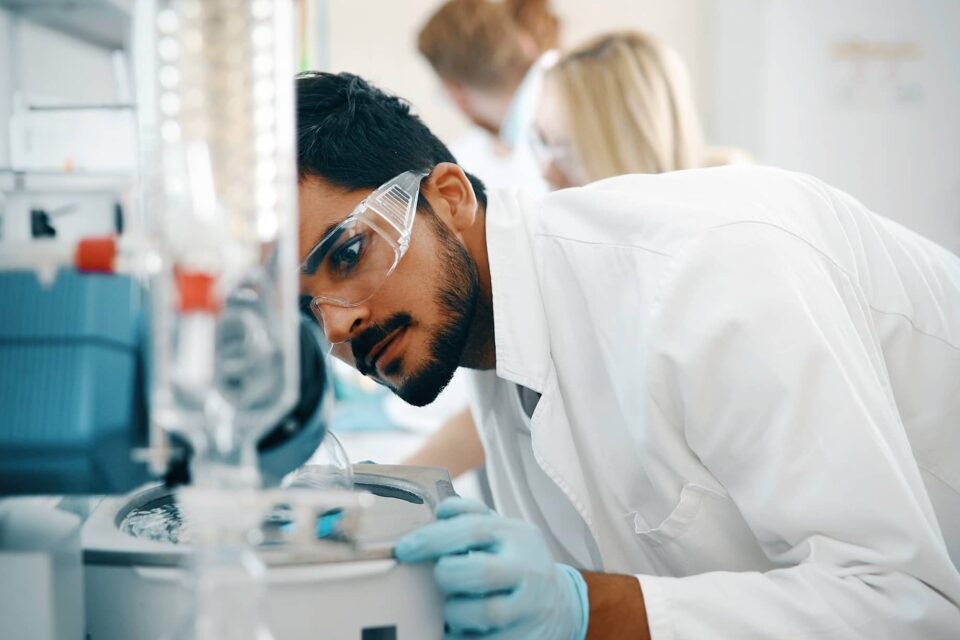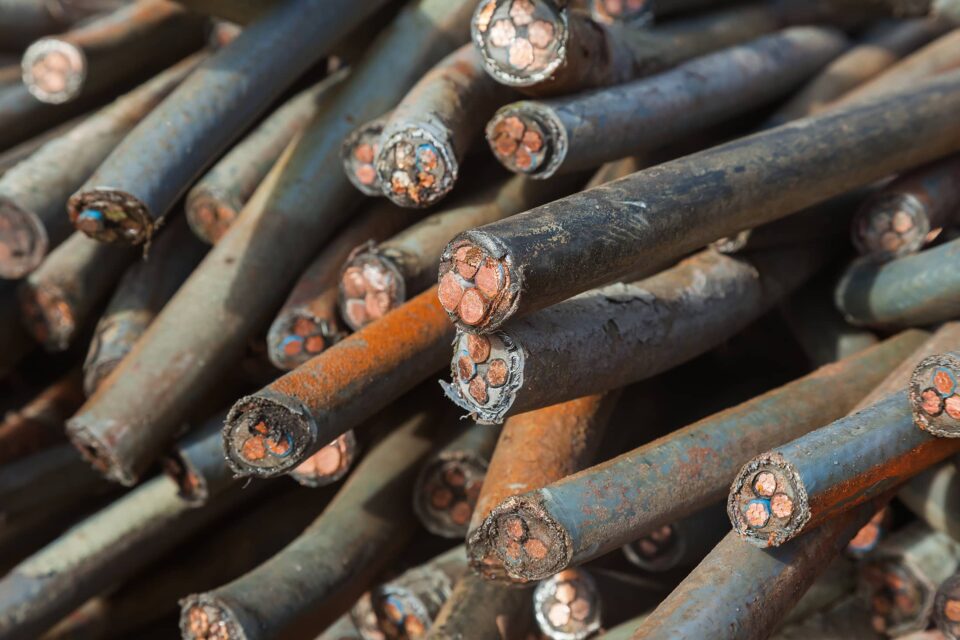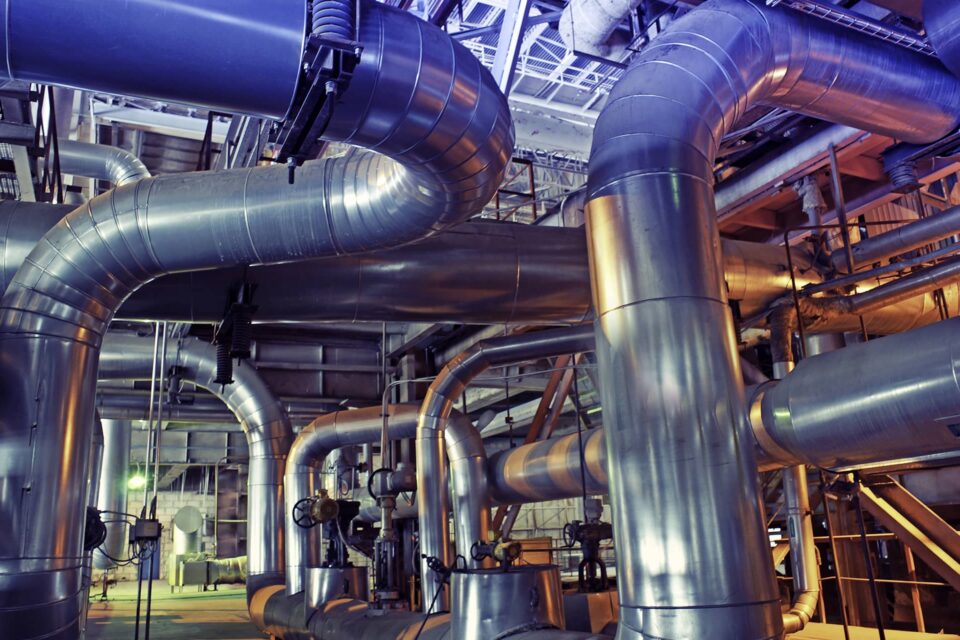The conscious recognition and observation of shortcomings, problems and/or inadequacies have always been the driving force and motivation for innovation. This was also the case here.
How I got the idea for the automatic pycnometer
written by Prof. Dr. Ing. Dieter Claus Schwechten
My teaching activities within the scope of the professorship Particle Technology and Sorting Technology included lectures and practical laboratory exercises with students of process and environmental engineering on both topics. In terms of equipment, my laboratory is one of the most elaborate at the entire university, because mechanical process engineering and processing are each very broad subject areas.
We have therefore constantly invested in modern apparatus and analytical equipment in order to offer future engineers an attractive, state-of-the-art education. Industry-related tasks, such as developing a process scheme for the recycling of cable scrap as part of their sorting technology laboratory, are among the challenging assignments for students. In this way, they get to know a wide range of equipment in terms of its function and practical handling.


Developing a process scheme for the recycling of cable scrap in sorting technology
In the aforementioned laboratory experiment, the cable scrap is first crushed with a granulator for disintegration so that cables and sheathing are exposed, after which it is classified (broken down into particle size classes) by means of screening. These fractions are then treated individually in different types of sorting machines to end up with a copper concentrate and a plastic-rich thermoplastic final fraction – both as clean and pure as possible. I had the students compete against each other in process development and machine selection – to spur which group would achieve the best recyclable output while maintaining high concentrate purity.
The pure raw materials (copper, plastic), the mixtures along the process stages and, at the end, the two concentrates have to be characterized and evaluated in terms of their composition and quality. For this purpose, the solid density is used as the central physical property. From the mixture density of an impure fraction, the contents of the components can be determined for only two main components, without the need for a time-consuming chemical analysis of the mixture. Based on the contents, material flows can then be calculated on the basis of material balances – one of the tasks for the students. A gas pycnometer was always available in the lab for measuring solid densities. Each lab group of students had at least 8 density measurements to complete on the pycnometer.
The measurements take too much time
We quickly realized that these density measurements could no longer be accomplished in the context of a laboratory afternoon, where the focus was to be on process development for recycling. As a result, the students were only given an instrument briefing on the pycnometer so that they could perform their measurements independently and by themselves on subsequent days. Of course, they were untrained, and mistakes often happened. Therefore, multiple measurements had to be performed more often on one sample. The time required for the 8 analyses was at least 2.5 hours. Much too long for a trivial matter that could be automated, I thought! This was the starting point for the idea and subsequent development of the BULK INSPECTOR with SIEBTECHNIK TEMA.
Why does it take even a skilled lab technician about 10 to 15 minutes to measure the density of a solid? Although density is considered a physical property of a substance, it is actually calculated from two individual measurements – namely the sample weight and the sample volume. Thus, the sample must be moved between a balance and a volumetric instrument (referred to as a pycnometer). All gas pycnometers on the market are partially automated in the measurement of volume, but require careful transport of the sample between the two instruments by hand. I found that this is no longer appropriate in today’s world with high wages and personnel costs. In quality assurance for production processes, a laboratory worker over 7.5 hours could at best only perform 30 to 45 solid density measurements per day!
Fast, reliable, error-free measurement methods are required
There is another aspect that makes a fully automatic measurement of the solids density seem sensible. Today, modern industrial processes are monitored, controlled and even regulated by means of online sensor technology. This requires fast, reliable, error-free measurement methods. With the existing laboratory gas pycnometers, robotic automation would be possible in principle, but overall it would certainly be far too expensive and too sensitive to external influences (dust, temperature, manipulation). Therefore, a fully automated gas pycnometer with built-in precision weighing technology, operating thermostatically at constant temperature in a largely hermetically sealed housing, makes perfect sense. The quality of the measurement results is consistently constant. Even in the laboratory, the measurement quality would improve and the measurement frequency would increase significantly, and in any case would no longer depend on a skilled laboratory technician or an unskilled worker. From this point of view, I have always longed for just such a device for my sorting technology lab with students.
High instrument accuracy & automated sampling
What my labs with students have also always shown were major errors in the calculations of material flows and mass balances as a result of incorrect sampling by hand. Therefore, performing representative sampling is also always an important learning objective for students. It is not only about the quality of the execution and the accuracy of a measuring device alone! So, in terms of online process automation, combining a highly accurate, fully automated pycnometer with intelligent, automated, continuous sampling from material streams would be the ultimate goal. One without the other does not work!
About the author:
Prof. Dr. Ing Dieter Claus Schwechten is a professor at the HTWG Konstanz (retired).
Teaching subjects:
Mechanical process engineering/particle technology, exhaust air purification, fluid mechanics, multiphase flows, Hygienic Design, methods of process development, Design of Experiments (DoE), sorting technology (recycling).
Specialized expertise:
Energy-saving grinding and sifting of very fine powders, online particle measurement technology, sampling, particle separation processes in processing and recycling, design and optimization of process engineering equipment.



